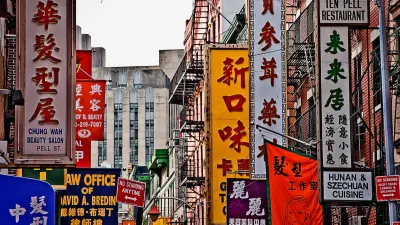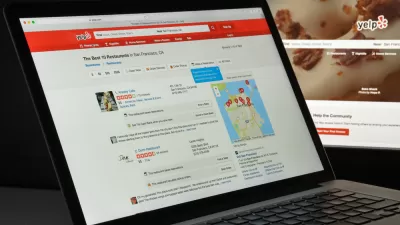One of the ways we identify places is by foods for which those places are known. Baltimore – crab. Maine – lobster. Cincinnati – chili. San Francisco – sourdough bread. Vienna – pastry. Even for a city to which you’ve never been, chances are that in your mind that city has some food association.
One of the ways we identify places is by foods for which those places are known. Baltimore – crab. Maine – lobster. Cincinnati – chili. San Francisco – sourdough bread. Vienna – pastry. Even for a city to which you've never been, chances are that in your mind that city has some food association.
I thought about this last week, while on a food tour of Harlem during the annual conference of the Association for the Study of Food and Society. We spent hours walking through the neighborhoods of Harlem, tracing its evolution through food. The barely visible traces of when East Harlem was home to the largest concentration of Italians outside Italy, and the rapidly fading presence of Puerto Rican cuchifritos (fried snacks, usually pig skin) and pasteles (a tamale-like holiday food). The agua frescas brought by the Mexican influx of the last fifteen years, and the African merchants selling palm fruit oil, fufu (cassava flour), cola nuts, and elubo (yam flour). The papayas and plantains that are consumed by the West Indians as well as many of the other people who have settled in Harlem. And of course, fried chicken, ribs, and greens with macaroni and cheese; a soul food feast that ties Black Harlem to its southern American roots.
And yet, if we played the city – food word association game, I'm guessing these are not the foods that would have been named. New York – bagels. New York – pizza. New York – hot dogs (from a stand on a street corner, natch). New York – weak diner coffee in an iconic Anthora to-go cup, emblazoned with the slogan "We are happy to serve you". New York – black & white cookies. New York – Mister Softee ice cream trucks.
The foods that are associated with New York have been disassociated from their cultural roots. To be sure, we know pizza is Italian and bagels are Jewish, but even so tagged, we are inclined to think: "Jewish bagels are something you eat in New York". They have become a New York food, understood to be iconic of the city. Yet cuchifritos remain steadfastly Puerto Rican not New York, even though I'd wager they are more widely available than New York cheesecake.
Food is one of the many ties we have to place. It is an indicator. If I'm standing on a street corner eating a soft, hot pretzel or a cool Italian ice I know I'm in New York. Yet if I'm standing on that same corner savoring a spicy Jamaican meat pie, though I'm consuming the food of one of New York's many cultures, there is nothing about eating that meat pie that places me in New York. The people of the nearly infinite ethnic subcultures that
have and continue to make up New York's polyglot neighborhoods are celebrating
their ancestral culture, not their identities as New Yorkers, when eating
Dominican arepas (a fat cornmeal
griddle cake, often filled with meat or cheese). If those arepas are transmogrified into knishes, then the consumers become
New Yorkers, or are celebrating New York.
How do these distinctions play into identity? To our
understandings of what it means to belong? To how we map place?

Alabama: Trump Terminates Settlements for Black Communities Harmed By Raw Sewage
Trump deemed the landmark civil rights agreement “illegal DEI and environmental justice policy.”

Study: Maui’s Plan to Convert Vacation Rentals to Long-Term Housing Could Cause Nearly $1 Billion Economic Loss
The plan would reduce visitor accommodation by 25% resulting in 1,900 jobs lost.

Planetizen Federal Action Tracker
A weekly monitor of how Trump’s orders and actions are impacting planners and planning in America.

Wind Energy on the Rise Despite Federal Policy Reversal
The Trump administration is revoking federal support for renewable energy, but demand for new projects continues unabated.

Passengers Flock to Caltrain After Electrification
The new electric trains are running faster and more reliably, leading to strong ridership growth on the Bay Area rail system.

Texas Churches Rally Behind ‘Yes in God’s Back Yard’ Legislation
Religious leaders want the state to reduce zoning regulations to streamline leasing church-owned land to housing developers.
Urban Design for Planners 1: Software Tools
This six-course series explores essential urban design concepts using open source software and equips planners with the tools they need to participate fully in the urban design process.
Planning for Universal Design
Learn the tools for implementing Universal Design in planning regulations.
Caltrans
Smith Gee Studio
Institute for Housing and Urban Development Studies (IHS)
City of Grandview
Harvard GSD Executive Education
Toledo-Lucas County Plan Commissions
Salt Lake City
NYU Wagner Graduate School of Public Service





























